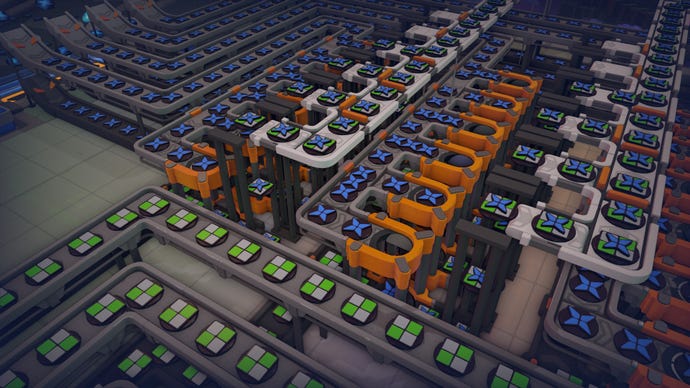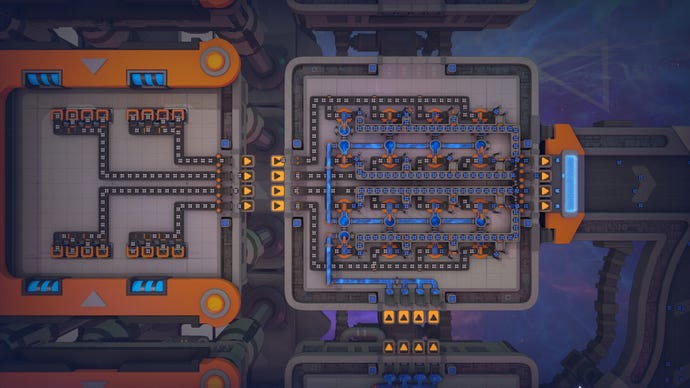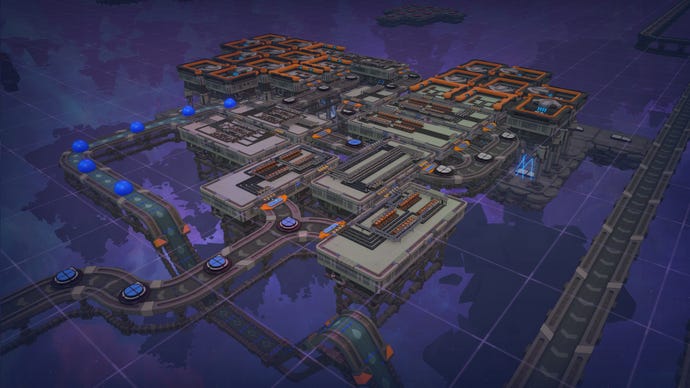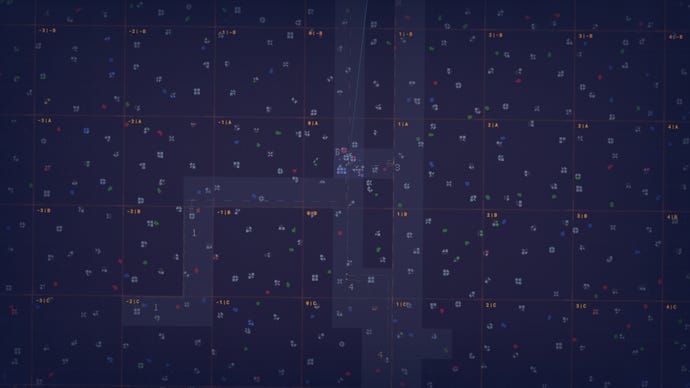Shapez 2 early access review: splendid abstract factory-building with room for a few more surprises
Shaping up very nicely
Over 2000 hours spent in various factory games makes me a bit of a purist, I suppose. In theory, I should then be the ideal reviewer to enjoy Shapez 2. But I'm also the ideal reviewer to tear it apart over the most minor hiccups and defects. I'm the Anton Ego of factory games. I don't like food, I love it. If I don't love it, I don't swallow.
Ah, you needn't worry. This is by far the most fun I've had reviewing a game, and Shapez 2 has, in my mind at least, turned the holy trinity of factory games (Factorio, Satisfactory, Dyson Sphere Program) into a holy quartet. Its pared back, everything-is-free-forever approach is quite liberating, and I've never had so much fun placing conveyor belts in my life. But 40 hours into my save file, I've often found myself yearning for a bit more creativity in the challenges, a few more curveballs sent in my direction.
If you've played a factory game before, you know the drill with Shapez 2, and will be able to settle into its rhythm of cutting, rotating, and combining shapes very quickly. Life begins at the centre of the world, where a giant, shape-hungry vortex lives. It wants you to feed it circles. So, you plop a few extractors on the nearby circle deposit, and conveyor belt your new shapes right into the vortex's maw. Ding! The vortex is now bored of circles. It wants squares. So, you connect up a patch of nearby squares. Ding! Now it wants semi-circles, so you need to do your first bit of shape manipulation, by slicing some of those circles in half. Ding! Now the vortex craves semicircles attached to rectangles. Ding! Now a circle on top of a square. Ding! Now the circle is red and the square is blue. Ding! Ding! Ding!

You get the idea. There are two big points of differentiation between Shapez 2 and other factory builders. First is the sandbox nature. There are no enemies to contend with, and buildings don't cost any resources, so you're free to build up or tear down belts and buildings as much as you like. The second is the abstraction of the factory products and goals. In Factorio, you're building circuitboards, gears, plastic bars, all with the end goal of building a rocket to fly away from the hellish planet you've crashlanded on. In Shapez 2, you're building shapes, for no other reason than to feed an ever-hungry vortex who wants to eat shapes.
Cheffing shapes for a ravenous abyss means the game does throw tasks and milestone goals at you non-stop, like the ability to paint shapes different colours or use trains to transport shapes over huge distances, so you feel propelled along by the intrigue of not knowing what you'd make next. But even still, you do feel like things start to slow a little as the milestones keep coming, as I was hoping for a few more unlocks that would really get my brain working.
Whether these points of differentiation are appealing or repulsive is entirely subjective. I've no issue with the level of abstraction; in fact, I think it's very intuitive. In other games, you have to hover over a circuit board to find out how to make it. In Shapez 2, you can clearly see - oh, okay, so that's a square on the bottom, with opposite quarters of a circle layered atop it. Cool. This sandbox approach means that many of the issues you run into in games like Factorio - running out of resources, defending against enemy attacks, exploring the world for new areas - don't exist here, and will appeal to some players. But I don't think the game goes far enough to replace those problem-solving moments with other quandries.

Nevertheless, the game has also grown vastly since I played its Next Fest demo, not just in scale but in sophistication. One bugbear I had with the demo was that completing tasks would automatically improve the efficiency and throughput of your belts and factory buildings. Sounds good on paper, but actually it's pissing annoying for people who cares about carefully engineering a build based on throughput levels, only to have those levels change a few minutes later. With the early access release though, non-Milestone tasks will grant you research points which you can make the choice to spend on improving the efficiency of different buildings - as well as unlocking entirely new buildings and features. It's a well-implemented system and an excellent change which places control of production rates directly in the player's hands where it belongs.
One slightly bizarre design choice is that Shapez 2 makes all the buildings and belts free, but simultaneously ascribes a currency to both copy-pasting blueprints and placing down platforms. The procedurally generated worlds of Shapez 2 are vast and - unlike in Shapez 1 - mostly outer space which you can't build on. To reach far-flung "shape asteroids" to mine more interesting shapes, you need to place down more platforms like the one that houses your central vortex, thus increasing your real-estate for factory-building. The game's tutorials also encourage you to pre-build platforms for a certain purpose. For example, I spent a bit of time putting together a platform which takes in eight full conveyor belts of one shape, splits them all in half down the middle, and then outputs the two halves in different directions. After that, I could just copy and paste that platform whenever I needed it. Well, as long as I had the Blueprint Points for pasting it, and some spare Platforms to place down.


It's an odd, slightly muddled mixture. On the one hand, the things which normally cost resources in these games, like buildings and belts, are free. On the other, things that are normally just completely free quality of life things, like copy-pasting a blueprint, have a cost. Back when I played the Next Fest demo I liked the idea of having an extra goal in the background to toil away at, but now I'm not so sure. Mostly because the balance seems completely wacky with the costs, anyway. You gain Blueprint Points by inputting certain shapes into the vortex, and maybe I was just a bit too proactive, but I always had several million Blueprint Points available, and even the costliest copy-paste jobs would only cost a few thousand at the most. It feels some rebalancing might be in order here.
But those kinds of minor quibbles are easily forgotten when you're halfway through a major shape-building project. In my current save file, I'm working on a factory which outputs over 4,000 of a certain milestone shape every minute. After you complete the final shape in a milestone, you can continue to produce that shape and send it into the vortex to increase your Operator Level, which is mostly just for bragging rights but also gives you some research points, Blueprint Points, and so on for your trouble. It's a nice touch, at once celebratory and motivational.

And once you unlock the final milestones, the milestone shapes become randomised, and the game encourages you to start using logic and circuitry to create what's called a Make Anything Machine (MAM) - the ultimate step in automation. Now that's the kind of intriguing step up in complexity I want more of throughout the game, and it's one that I hope to spend plenty more time with.
This rings especially true, given how the game realises that satisfaction is the bedrock of the factory genre, and leans heavily into it. Dopamine is a byproduct of just about every building in the game, with wonderfully charming animations that show the shapes actually being split apart, rotated, and stacked atop one another. Some of this small-scale refinement is lost when you grow your factory to a certain size and start to spend most of your time zoomed out, copy-pasting whole platforms at a time instead of individual buildings and belts. Once you get to that stage though, you are already well and truly in the clutches of the game's siren song of mass production and automation.
Shapez 2 is a different flavour of factory game than I'm used to, but executed at times to a near-masterpiece level which makes it very easy to dive in and try something a bit different. Minor balancing issues aside, it all feels incredibly tightly wound, with a huge emphasis placed on comfort, user experience, and satisfaction. I just hope the depth increases over its early access period, with more types of challenges built into later factory processes, and more reasons to explore further afield.


